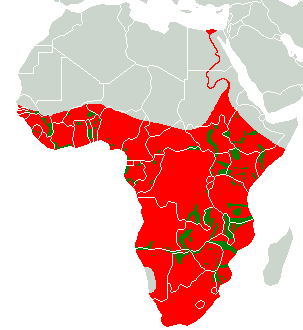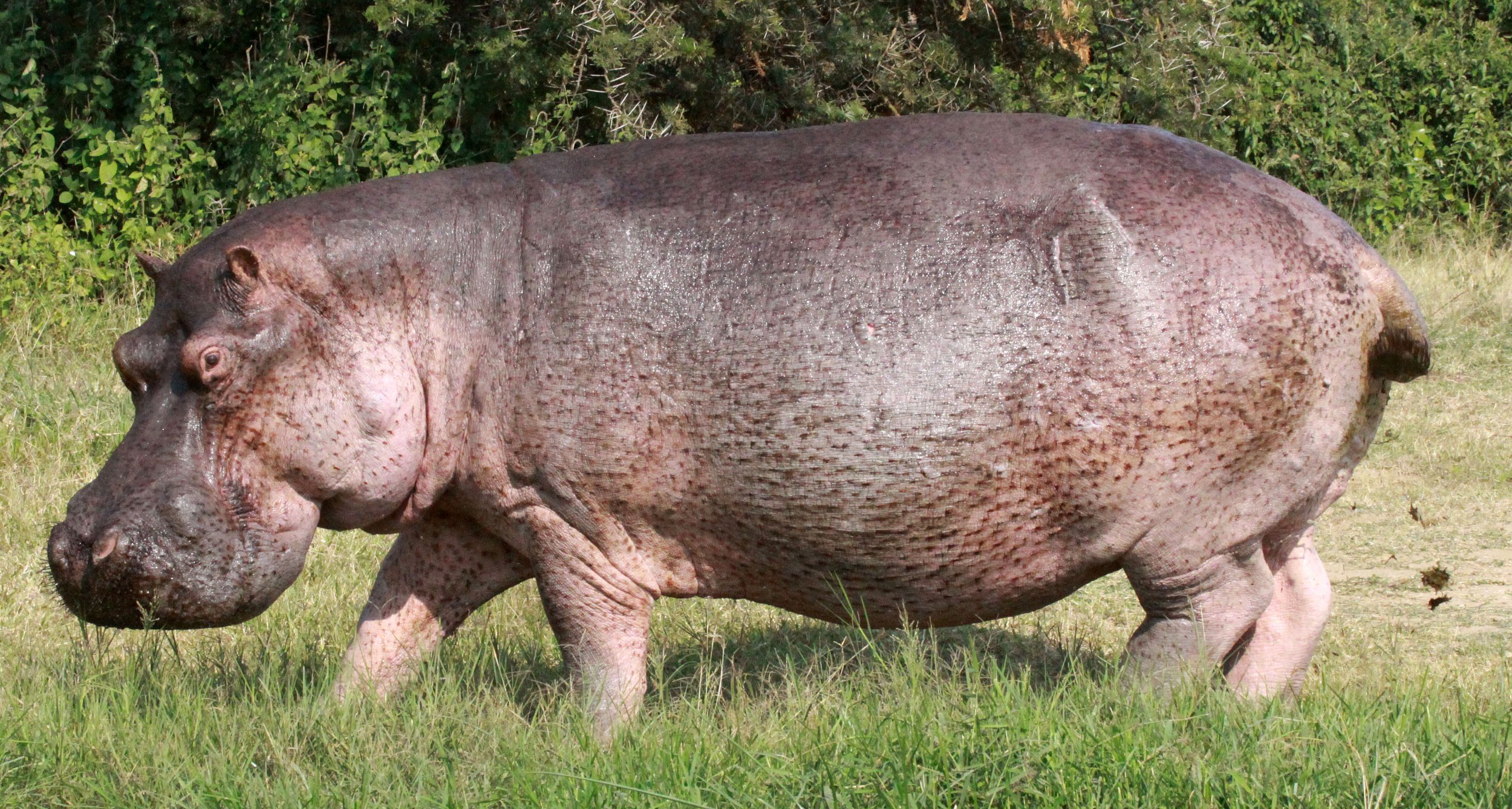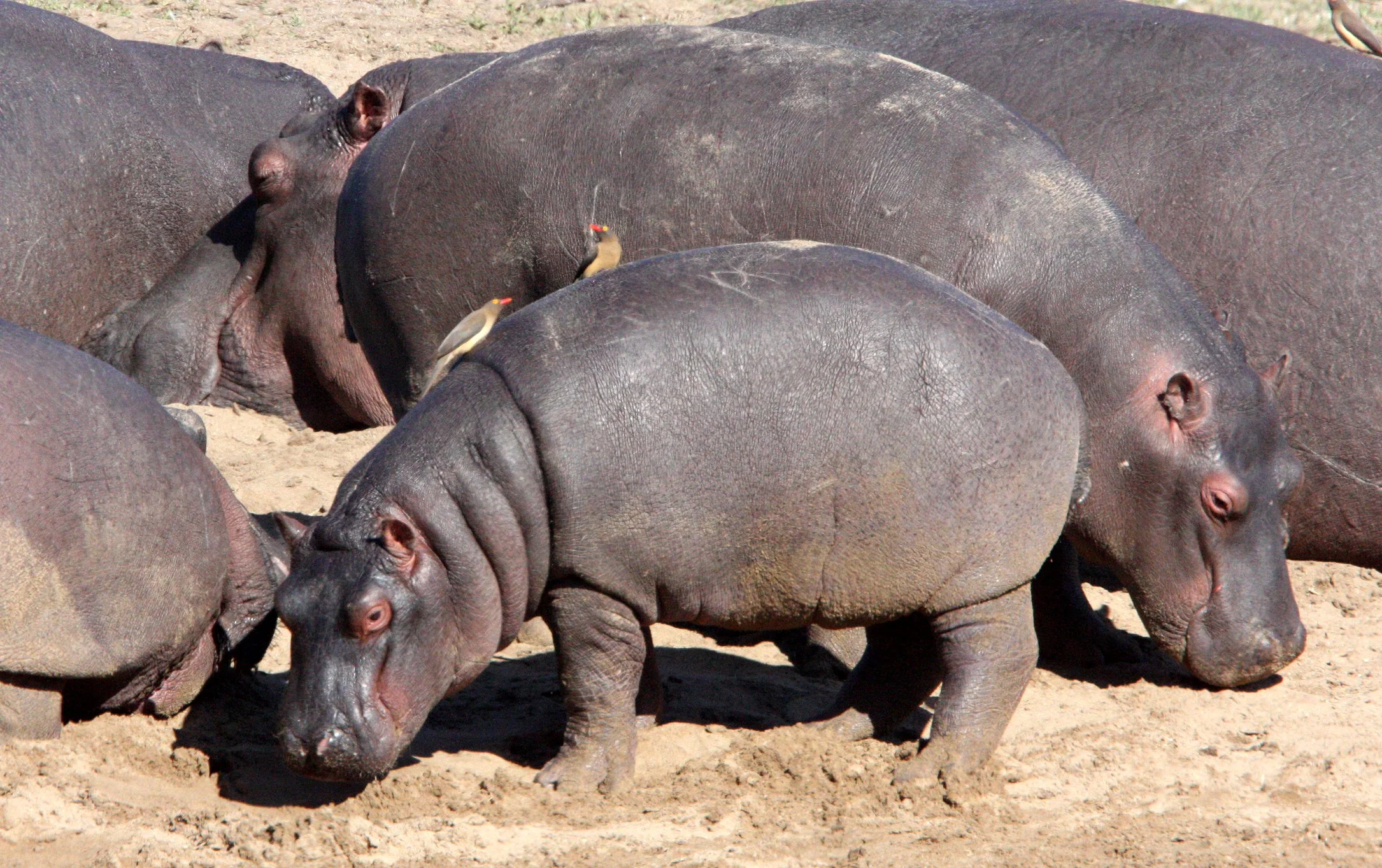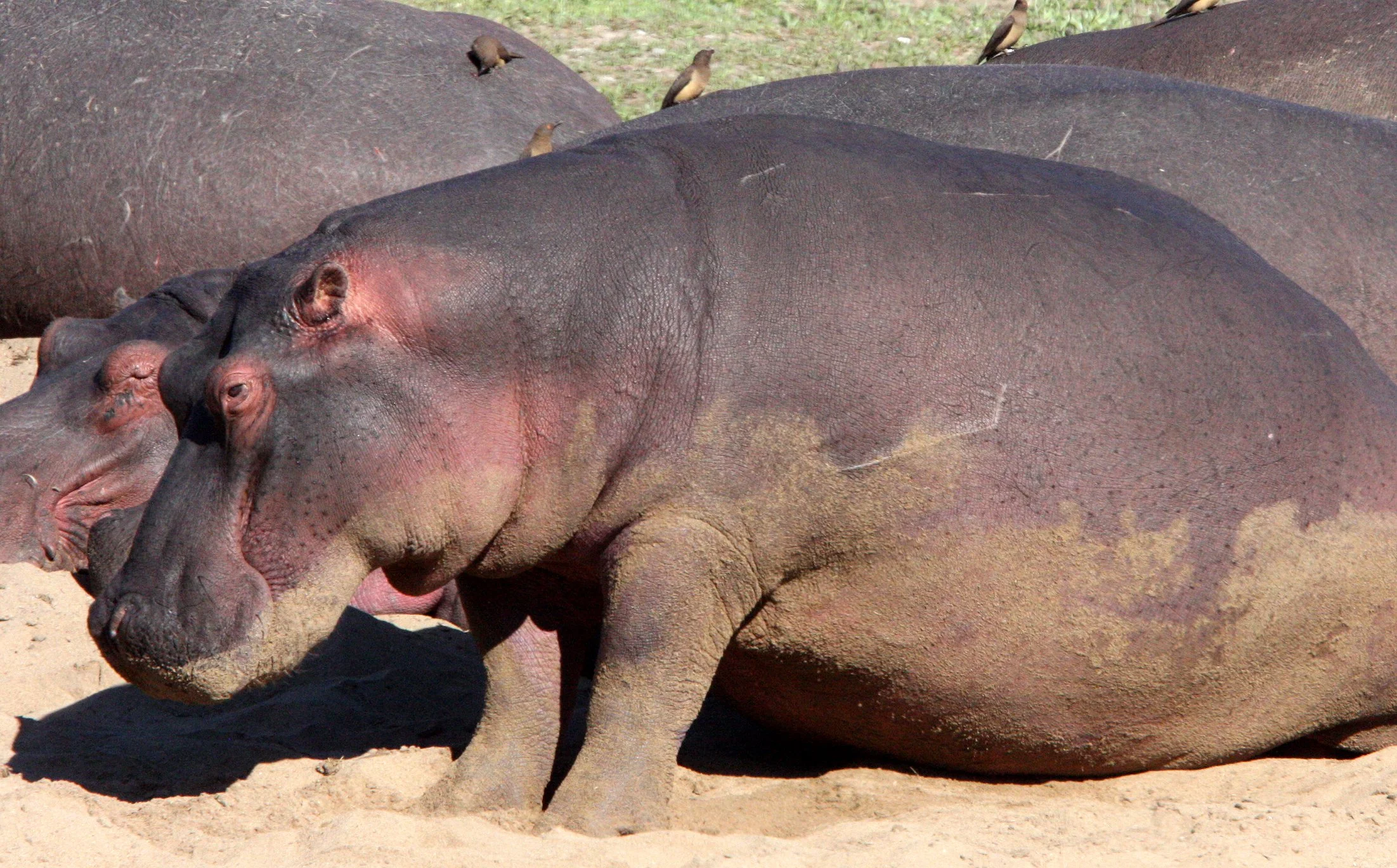
Hippos
Pygmy Hippo Moo Deng(Choeropsis liberiensis) scroll down to final gallery
Hippo distribution. Red is historical range and green is current.
The Hippopotamus ( pl: hippopotamuses or hippopotami; Hippopotamus amphibius), also called the hippo, common hippopotamus, or river hippopotamus, is a large semiaquatic mammal native to sub-Saharan Africa. It is one of only two extant species in the family Hippopotamidae, the other being the pygmy hippopotamus (Choeropsis liberiensis or Hexaprotodon liberiensis). Its name comes from the ancient Greek for "river horse" (ἱπποπόταμος).
Aside from elephants and rhinos, the hippopotamus is the largest land mammal. It is also the largest extant land artiodactyl. Despite their physical resemblance to pigs and other terrestrial even-toed ungulates, the closest living relatives of the hippopotamids are cetaceans (whales, dolphins, porpoises, etc.), from which they diverged about 55 million years ago. Hippos are recognisable for their barrel-shaped torsos, wide-opening mouths with large canine tusks, nearly hairless bodies, pillar-like legs, and large size: adults average 1,500 kg (3,310 lb) for bulls (males) and 1,300 kg (2,870 lb) for cows (females). Despite its stocky shape and short legs, it is capable of running 30 km/h (19 mph) over short distances.
Hippos inhabit rivers, lakes, and mangrove swamps. Territorial bulls each preside over a stretch of water and a group of five to thirty cows and calves. Mating and birth both occur in the water. During the day, hippos remain cool by staying in water or mud, emerging at dusk to graze on grasses. While hippos rest near each other in the water, grazing is a solitary activity and hippos typically do not display territorial behaviour on land. Hippos are among the most dangerous animals in the world due to their aggressive and unpredictable nature. They are threatened by habitat loss and poaching for their meat and ivory (canine teeth).
The modern hippopotamus and the pygmy hippopotamus are the only living members of the family Hippopotamidae. Some taxonomists group hippos and anthracotheres in the superfamily Anthracotheroidea. Hippopotamidae are classified along with other even-toed ungulates in the order Artiodactyla.
Five subspecies of hippos have been described based on morphological differences in their skulls as well as differences in geographical range:
Great northern hippopotamus or Nile hippopotamus H. a. amphibius – (the nominate subspecies) which ranged from Egypt, where they are now extinct, south up the Nile River to Tanzania and Mozambique
East African hippopotamus H. a. kiboko – was present in Kenya in the African Great Lakes region, and in Somalia in the Horn of Africa. Featured broader nasals and a more hollowed interorbital region
Cape hippopotamus or South African hippopotamus H. a. capensis – ranged from Zambia to South Africa; had the most flattened skull of the various subspecies
West African hippopotamus or Tchad hippopotamus H. a. tschadensis – ranged throughout Western Africa to Chad, as the name suggests; featured a slightly shorter and wider face, with prominent orbits
Angola hippopotamus H. a. constrictus – ranged from the southern Democratic Republic of Congo to Angola and Namibia; named for its deeper preorbital constriction
The suggested subspecies above were never widely used or validated by field biologists; the described morphological differences were small enough that they could have resulted from simple variation in nonrepresentative samples: 2 Genetic analyses have tested the existence of three of these putative subspecies. A study examining mitochondrial DNA from skin biopsies taken from 13 sampling locations considered genetic diversity and structure among hippo populations across the continent. The authors found low, but significant, genetic differentiation among H. a. amphibius, H. a. capensis, and H. a. kiboko. Neither H. a. tschadensis nor H. a. constrictus have been tested.
Until 1909, naturalists classified hippos together with pigs based on molar patterns. Several lines of evidence, first from blood proteins, then from molecular systematics and DNA and the fossil record, show their closest living relatives are cetaceans (whales, dolphins, and porpoises). The common ancestor of hippos and whales branched off from Ruminantia and the rest of the even-toed ungulates; the cetacean and hippo lineages split soon afterwards.
The most recent theory of the origins of Hippopotamidae suggests hippos and whales shared a common semiaquatic ancestor that branched off from other artiodactyls around 60 million years ago. This hypothesised ancestral group likely split into two branches again around 54 million years ago.
One branch would evolve into cetaceans, possibly beginning about 52 million years ago, with the protowhale Pakicetus and other early whale ancestors collectively known as Archaeoceti. This group eventually underwent aquatic adaptation into the completely aquatic cetaceans. The other branch became the anthracotheres, a large family of four-legged beasts, the earliest of which in the late Eocene would have resembled skinny hippos with comparatively small and narrow heads. All branches of the anthracotheres, except that which evolved into Hippopotamidae, became extinct during the Pliocene without leaving any descendants.
A rough evolutionary lineage of the hippo can thus be traced from Eocene and Oligocene species: from Anthracotherium and Elomeryx to the Miocene species Merycopotamus and Libycosaurus and finally the very latest anthracotheres in the Pliocene. These groups lived in Eurasia, and the discovery of Epirigenys in East Africa, which was likely in a sister group to Hippopotamidae, suggests hippo ancestors entered Africa around 35 million years ago and were the earliest large mammals to colonise the continent. An early hippopotamid is the genus Kenyapotamus, which lived in Africa from 15 to 9 million years ago. Hippopotamid species would spread across Africa and Eurasia, including the modern pygmy hippo. From 7.5 to 1.8 million years ago, a possible ancestor to the modern hippo, Archaeopotamus, lived in Africa and the Middle East.
Nile or Great Northern Hippopotamus (Hippopotamus amphibius amphibius) from various locations in East Africa - Uganda, Kenya
Cape or Southern African Hippopotamus (Hippopotamus amphibius capensis) Kruger National Park
Angolan Hippopotamus (Hippopotamus amphibius constrictus) Chobe National Park, Botswana
East African Hippopotamus (Hippopotamus amphibius kiboko) Masai Mara Kenya
Pygmy Hippo “Moo Deng” (Choeropsis liberiensis) Khao Kiew Outdoor Wildlife Park
Pygmy Hippo Moo Deng (Choeropsis liberiensis) Khao Kiew Outdoor Wildlife Park











































































































































































































































































































































































































